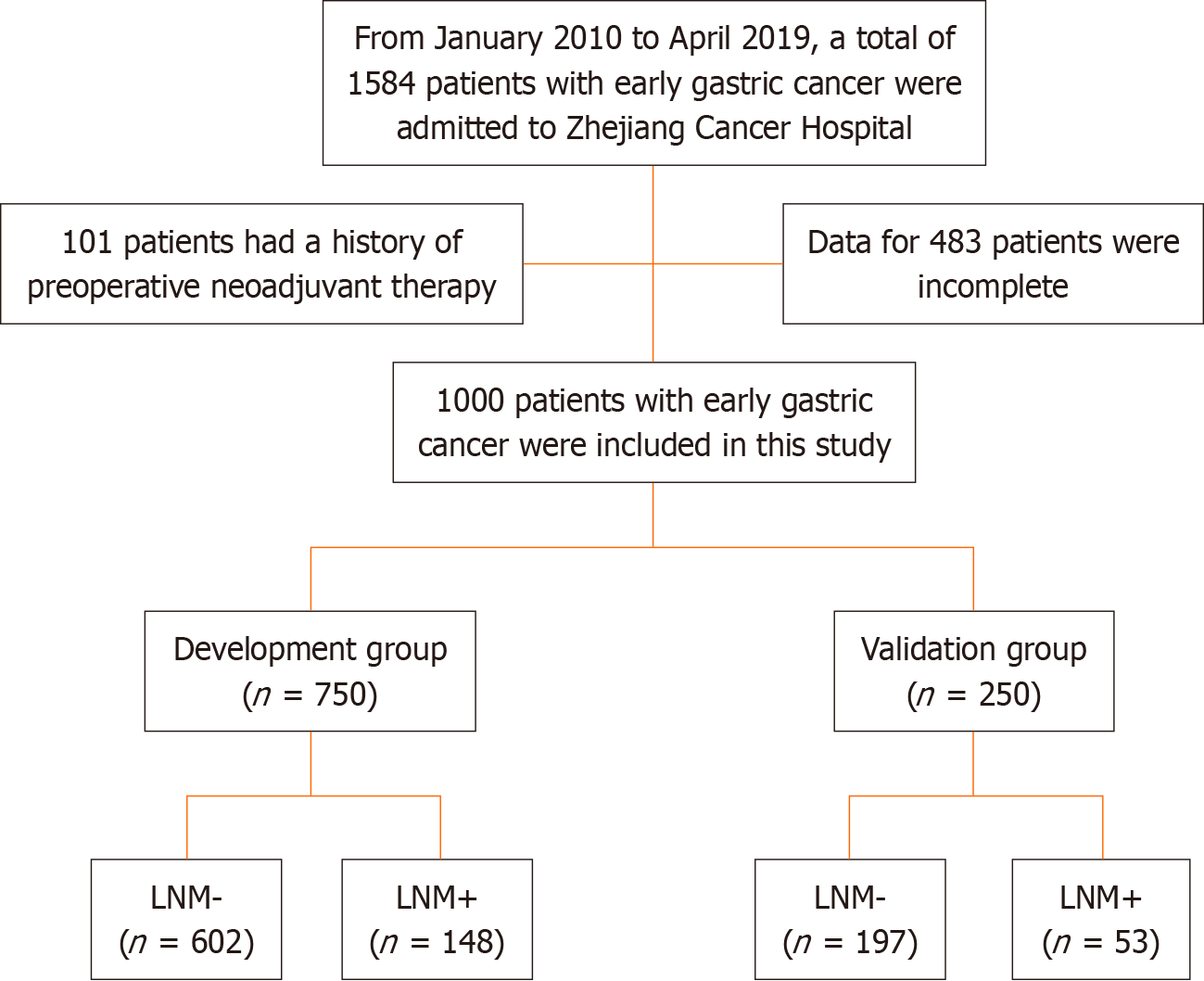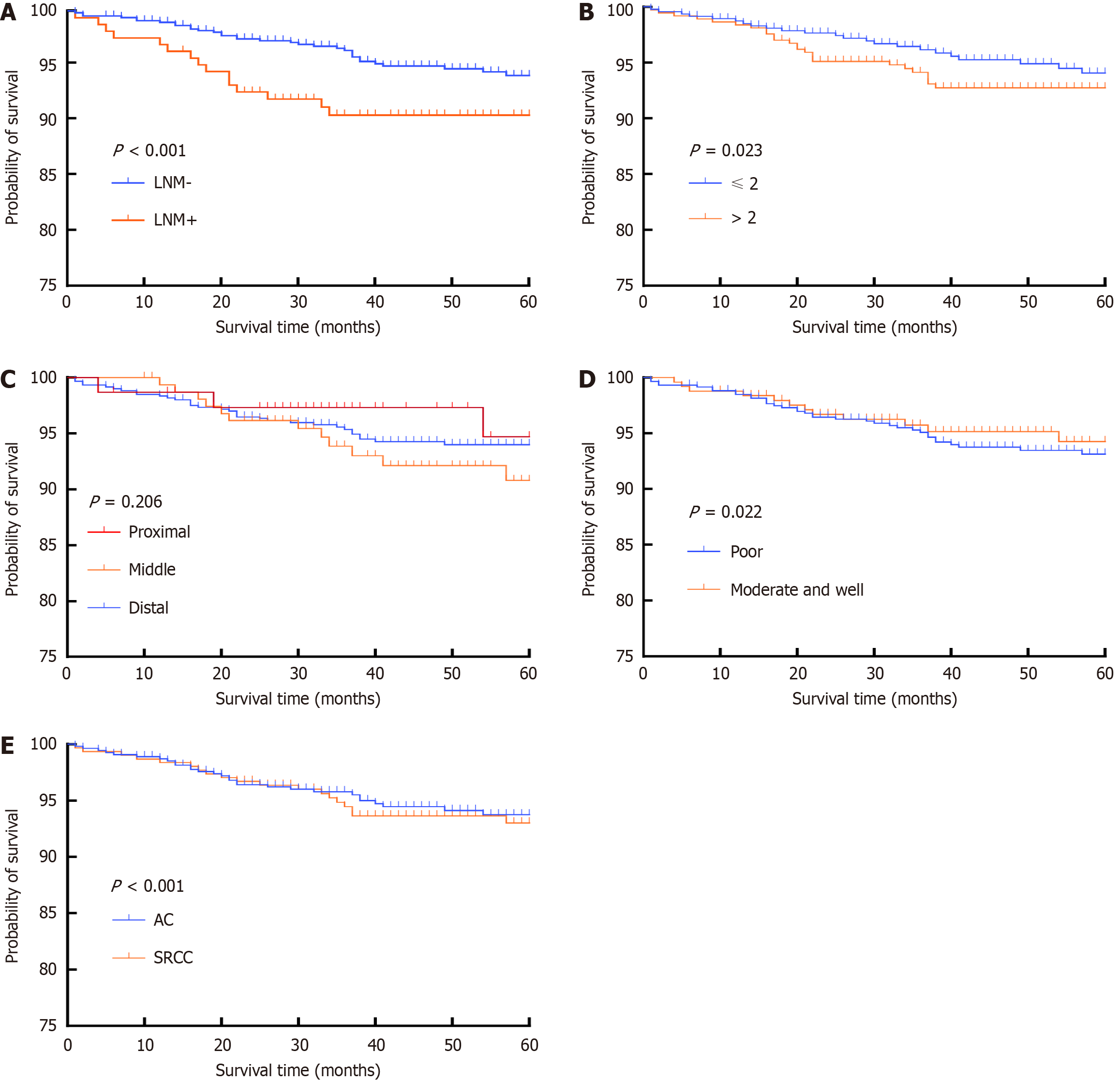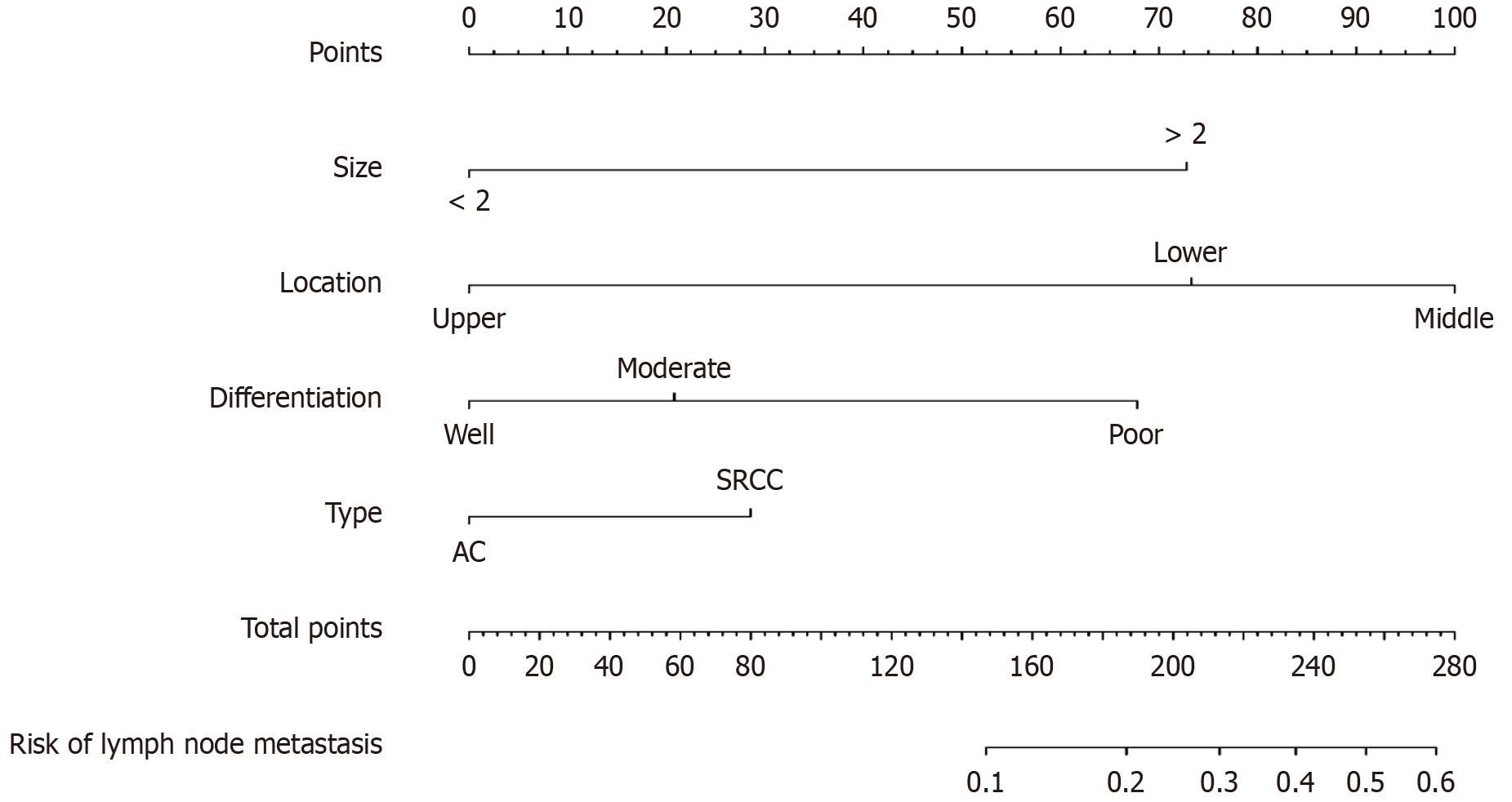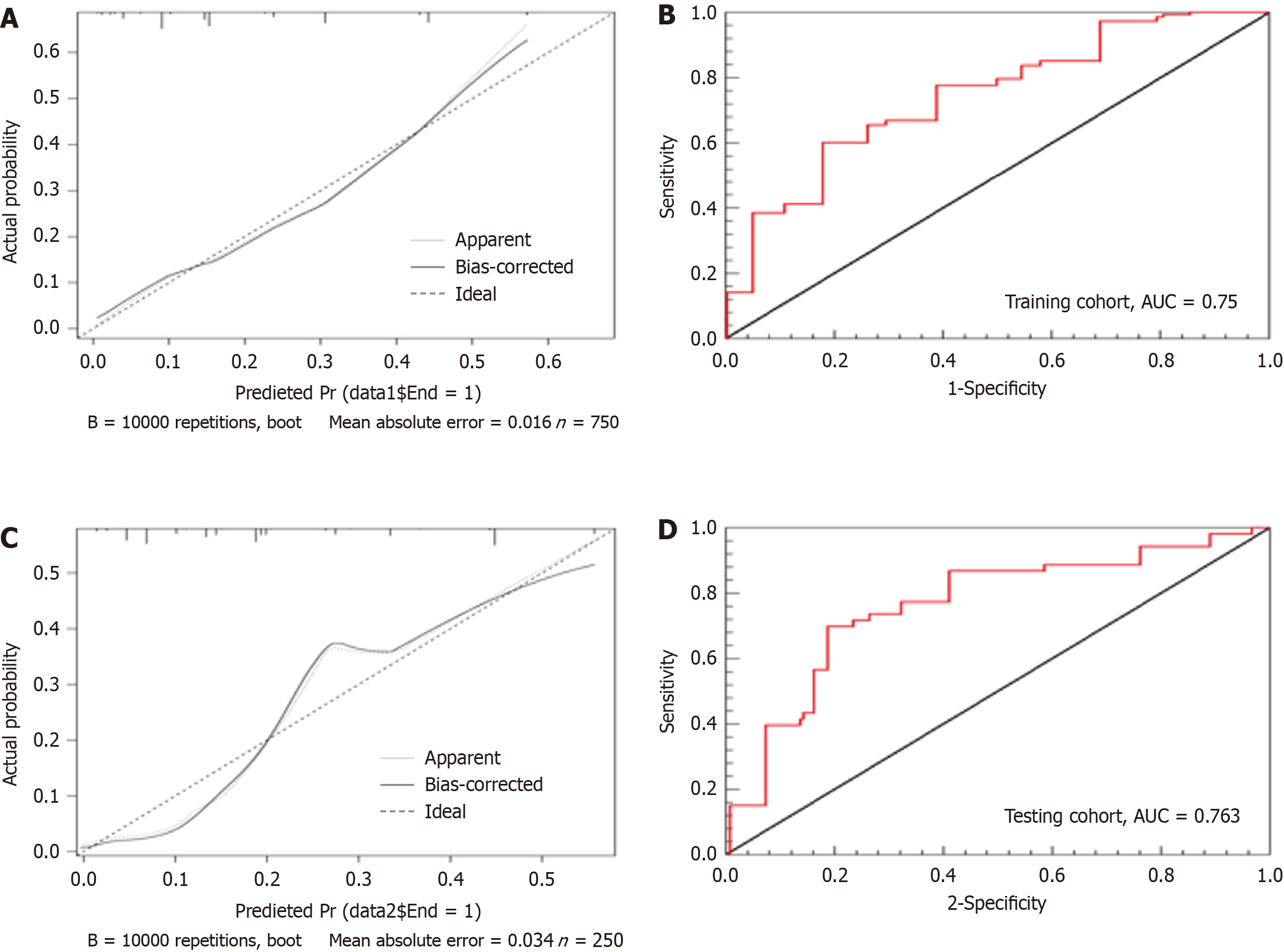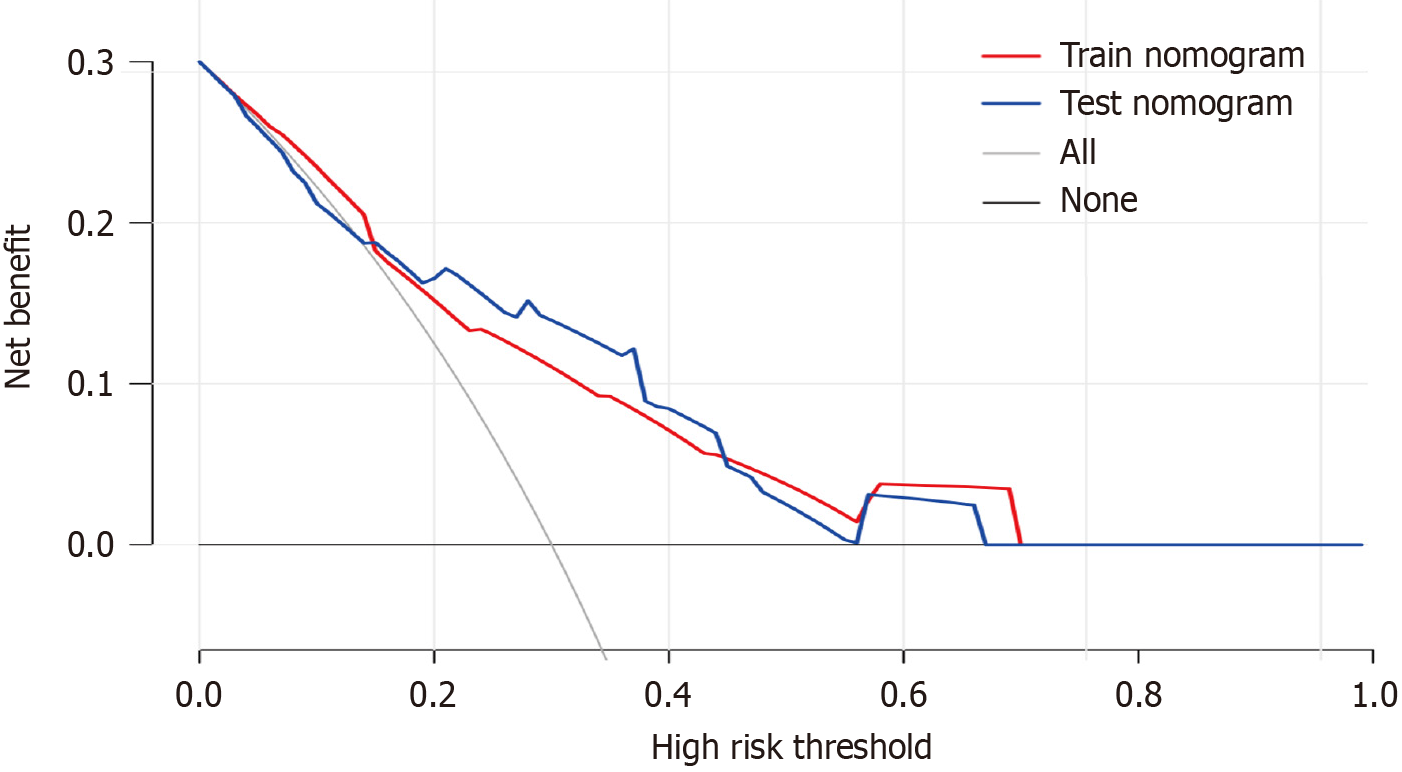Copyright
©The Author(s) 2024.
World J Gastrointest Oncol. Jul 15, 2024; 16(7): 2960-2970
Published online Jul 15, 2024. doi: 10.4251/wjgo.v16.i7.2960
Published online Jul 15, 2024. doi: 10.4251/wjgo.v16.i7.2960
Figure 1 Patient inclusion flowchart showing the number of patients, selection criteria and grouping information.
From January 2010 to April 2019, a total of 1584 patients with early gastric cancer were admitted to Zhejiang Cancer Hospital, 101 had undergone preoperative neoadjuvant therapy, 483 had incomplete clinical data, and 1000 patients with early gastric cancer were ultimately included in this study for analysis. LNM: Lymph node metastasis.
Figure 2 Kaplan-Meier survival curve based on risk factors associated with overall survival.
A: Lymph node metastasis (LNM); B: Tumor size; C: Tumor location; D: Degree of differentiation; E: Pathological type. The presence of lymph node metastasis, tumor larger than 2 cm, poor differentiation, and the signet ring cell carcinoma (SRCC) pathological type were all associated with a preferred 3-year overall survival (P < 0.05). AC: Adenocarcinoma.
Figure 3 Nomogram including tumor size, tumor location, degree of tumor differentiation, and tumor pathological type.
Based on the independent predictors of early gastric cancer lymph node metastasis, a clinical nomogram was developed to predict the risk of lymph node metastasis in early gastric cancer. AC: Adenocarcinoma; SRCC: Signet ring cell carcinoma.
Figure 4 Discrimination and calibration of the model were evaluated.
A: The calibration curve for predicting lymph node metastasis in early gastric cancer in the training cohort; B: In the training cohort, the area under the curve (AUC) of this prediction model is 0.75 [95% confidence interval (CI): 0.701-0.789] and the C index of predicting early recurrence is 0.75; C: The calibration curve for predicting lymph node metastasis in early gastric cancer in the testing cohort; D: The AUC of this prediction model is 0.763 (95%CI: 0.687-0.838) and the C index of predicting early recurrence is 0.763.
Figure 5 Decision curve analysis indicated strong clinical utility of the model.
The decision curve analysis was used to evaluate the clinical value of the nomogram and other standard clinicopathological parameters.
- Citation: He JY, Cao MX, Li EZ, Hu C, Zhang YQ, Zhang RL, Cheng XD, Xu ZY. Development and validation of a nomogram for predicting lymph node metastasis in early gastric cancer. World J Gastrointest Oncol 2024; 16(7): 2960-2970
- URL: https://www.wjgnet.com/1948-5204/full/v16/i7/2960.htm
- DOI: https://dx.doi.org/10.4251/wjgo.v16.i7.2960









